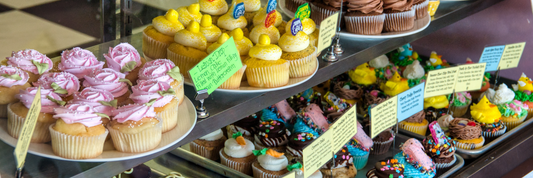Making a wooden cutting board is a fun DIY project that not only saves you money but also gives you the pride of owning a product you created yourself. In this article, we will explore how to make a cutting board, from choosing the right type of wood, preparing tools, to finishing and preserving the board.
- Kitchen Cutting Board : Definition, Uses, and Benefits
- Cutting Board Sizes: How to Choose the Perfect Fit for Your Kitchen
- Teak Cutting Boards: Benefits, Care Tips, and Why You Need One
Why Make Your Own Cutting Board?

Creating your own cutting board comes with numerous benefits that go beyond the mere act of woodworking. Here are a few reasons to consider undertaking this DIY project:
Personalized Size, Style & Materials
Making a cutting board allows you to customize every aspect—from its dimensions to the type of wood used. This ensures the board perfectly fits your kitchen space and personal style. You can choose a design that complements your kitchen’s aesthetics, whether it's sleek, rustic, or contemporary.
Eco-conscious Choice: Avoid Harmful Chemicals or Plastics
By selecting natural hardwoods and avoiding plastic or synthetic materials, you can contribute to a healthier ecosystem. Many commercially produced cutting boards are made with chemicals that can leach into food, while a handcrafted wooden board ensures you’re using a safer option.
Great DIY Project for Home Cooks, Hobbyists, or Gift Ideas
Whether you’re an avid cook or looking for a thoughtful gift, making a cutting board is a rewarding project. It’s suitable for all skill levels and can serve as a beautiful, functional addition to any kitchen.
Control Over Food-safe Finishes and Sustainability
Creating a cutting board yourself gives you the chance to choose food-safe finishes and eco-friendly wood options. This way, you can ensure that your kitchenware is not only beautiful but also sustainable and safe for everyday use.
What Type of Wood Should You Use For Cutting Boards?
Maple (Hard Maple)
- Features: Dense, durable, and has a tight, closed grain.
- Pros: Naturally antimicrobial, easy on knives, and widely available.
- Cons: Requires regular oiling to maintain.
Walnut
- Features: Dark, rich color with a softer texture compared to maple.
- Pros: Aesthetic appeal, gentle on knives, and less prone to cracking.
- Cons: Higher cost and slightly less durable than maple.
Cherry
- Features: Medium hardness with a warm reddish hue.
- Pros: Smooth grain, stylish appearance, and gentle on knives.
- Cons: Softer than maple and walnut, so it may wear faster.

Beech
- Features: Hard and dense, similar to maple, with a light color.
- Pros: Affordable and durable.
- Cons: Can warp if not cared for properly.
Teak
- Features: Contains natural oils that resist water and bacteria.
- Pros: Low maintenance and highly durable.
- Cons: Tough on knives due to silica content and expensive.

Bamboo (Technically a Grass)
- Features: Lightweight and eco-friendly alternative to traditional wood.
- Pros: Sustainable, affordable, and resistant to water.
- Cons: Hard on knives and more prone to cracking over time.
Tools and Materials Needed To Make a Cutting Board
Basic Tools
- Table Saw or Miter Saw: Used to cut wood into strips of the desired size.
- Planer: A tool that helps smooth wood surfaces, ensuring high precision.
- Sandpaper: Choose sandpaper from 80 grit (coarse) to 400 grit (fine) to finish the surface.
- Router: Used to create details such as drainage grooves or decorative borders.
- Clamp: Holds wood pieces in place during gluing.
Materials
- Wood: Maple, walnut, cherry are safe and durable woods.
- Glue: Choose a food-safe glue.
- Preservative oil: Mineral oil or a mixture of beeswax and beeswax to repel water and maintain shine.
How to Make a Cutting Board Step-By-Step
Step 1: Choose the Right Wood
- Hardwood such as maple, walnut or cherry is ideal because of its durability and good moisture resistance.
- Make sure the wood is free of chemicals or impurities that can affect your health.

Step 2: Prepare the Wood
- Cut the wood: Cut the wood into strips that are 1-2 inches wide.
- Flatten: Use a planer to smooth the surface of the wood, removing any cracks or dents.
- Arrange: Place the wood strips alternately to create a beautiful pattern.
Step 3: Glue and Secure
- Glue: Use food glue to glue the wood strips together.
- Secure: Use a clamp to hold the wood tightly for 24 hours, making sure the glue is completely dry.
Step 4: Cut and Shape
- Shape: Use a saw or jigsaw to cut the cutting board into the desired shape (square, rectangle, round).
- Details: Use a router to create drainage grooves or rounded edges.

Step 5: Sanding and Finishing
- Sanding: Start with coarse sandpaper (80 grit) and work your way up to fine sandpaper (400 grit).
- Oil: Apply mineral oil or a mixture of beeswax to waterproof and protect the surface.
Custom Wood Cutting Boards
Edge Grain Cutting Boards
Made from horizontal wood grain, these cutting boards are easy to manufacture and suitable for basic needs.
End Grain Cutting Boards
- The wood grain is cut vertically, creating a more durable surface and less likely to damage knives.
- This type is suitable for people who frequently use sharp knives.
Slotted Cutting Boards
- Suitable for foods with high water content such as meat and fruit.
- This design helps keep the kitchen surface clean and prevents water from spilling on the surface.
Safety Tips When Making a Cutting Board
When embarking on the journey of crafting your own cutting board, it’s essential to prioritize safety. The materials and practices you choose can significantly impact the function and longevity of your kitchen tool. Here are some critical considerations:

Always Use Food-Safe Glue and Finish
When constructing your cutting board, ensure to select glue and finishes marked as food-safe. Regular adhesives or finishes may contain harmful chemicals that can leach into food, posing health risks. Instead, look for products specifically labeled for food contact. They are designed to withstand moisture and are free of toxic ingredients.
Avoid Treated Wood or Toxic Sealants
Treated wood and some sealants contain pesticides or other harmful substances not suitable for food preparation. When selecting wood for your cutting board, choose options that are untreated and free from harmful chemicals. Hardwoods like maple, walnut, or cherry are not only safe but also boast natural antimicrobial properties.
Keep Surface Smooth to Prevent Bacterial Buildup
A smooth surface is vital for hygiene when it comes to cutting boards. Rough or damaged areas can harbor bacteria, which is a significant concern in food safety. Use fine sandpaper to finish your board, ensuring all surfaces are smooth to the touch and easy to clean.
Clean and Dry Regularly After Use
Once you start using your cutting board, make it a habit to clean it thoroughly after each use. Warm, soapy water is often sufficient, but avoid soaking it, as prolonged exposure to moisture can warp the wood. After cleaning, dry it promptly and store it in a dry place to maintain its integrity.

FAQs
How long does it take to make a wooden cutting board?
The process of making a wooden cutting board takes about a few hours to a couple of days.
What is the best type of wood for cutting boards?
Maple, walnut and cherry are the top choices for their durability, safety and aesthetics.
Can I use my homemade wooden cutting board for all types of food?
Yes, but I need to clean it thoroughly after preparing raw foods such as meat or fish to ensure hygiene.
How can I prevent mold from forming on my cutting board?
Apply preservative oil regularly and always keep the cutting board dry after each use.
Can I make cutting boards from recycled wood?
Yes, as long as the recycled wood is not contaminated with chemicals or damaged.
Conclusion
Making your own wooden cutting board not only saves money but also brings satisfaction when owning a unique product that suits your personal needs. Hopefully with the detailed instructions above, you can confidently carry out this DIY project and create a perfect wooden cutting board for your kitchen. If you have any questions or concerns, do not hesitate to share for further support!




